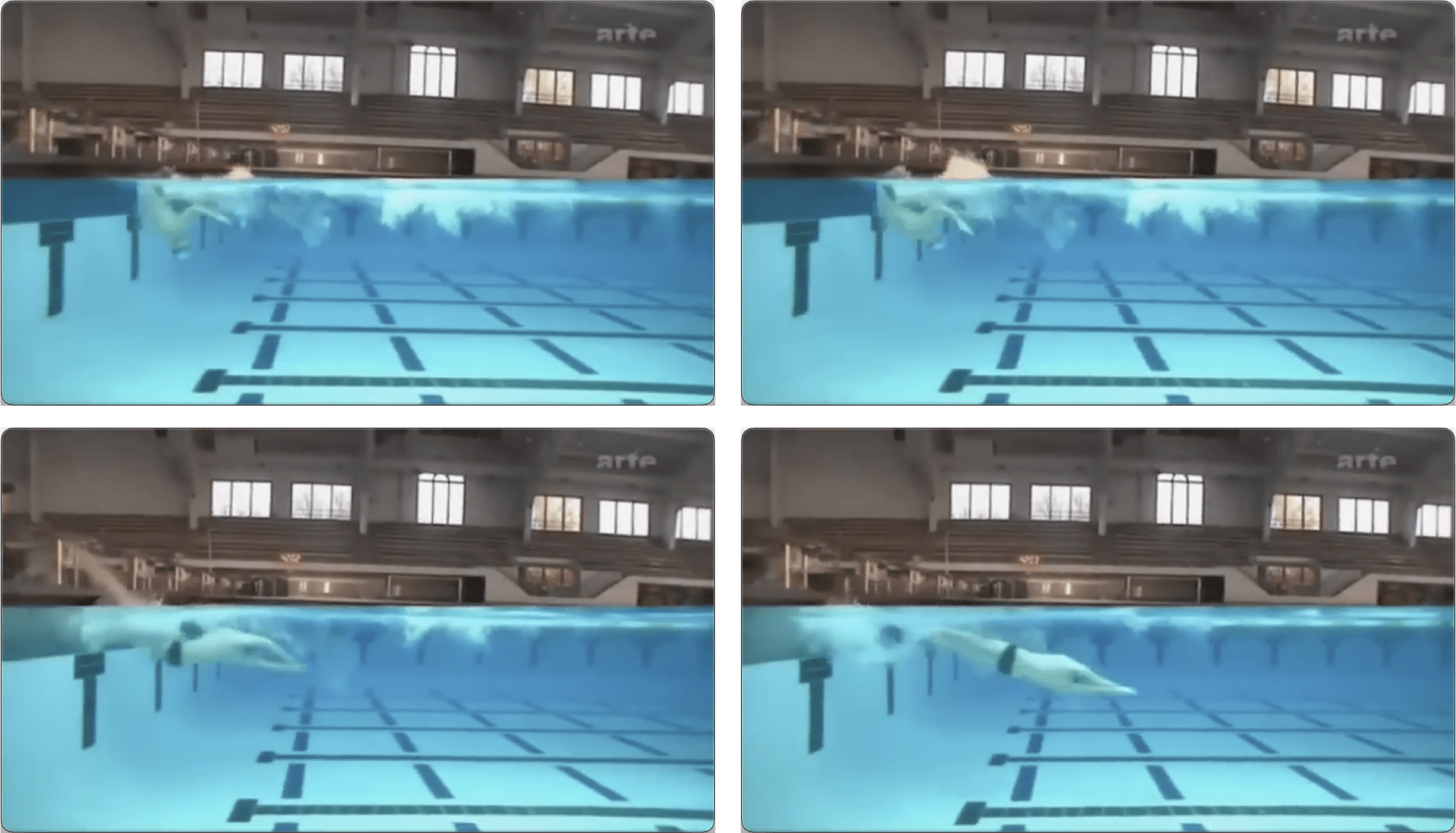For a long time now, I have paid close attention to professional swimmers executing the flip turn and coming off the wall like a torpedo.
For me, my flip turns have been an area where there is plenty of room for improvement. This season, I have begun by addressing the challenges I have encountered when performing flip turns. The first challenge, which is the focus of this blog post, revolves around hand placement. Yes, you heard me correctly: hand placement. It is easy to underestimate the importance of the position of one’s hands and arms during the turn.
If you were to freeze-frame my flip turn as my feet make contact with the wall, one arm would be pointing west, and the other would be oriented somewhere to the southeast. This substantially hinders my ability to come off the wall quickly, almost causing me to come to a complete stop before pushing off.
Flip turns are not intended for taking breaks; the goal is to launch off the wall with little delay. To achieve this, I have been working on placing my hands in a streamline position. I accomplished this by following the advice of “splashing your face”. The concept is that the palms of your hands should be facing your face, and as your feet connect with the wall, your arms should smoothly transition into a streamline position.
You can see Michael Phelps execute this type of turn in the video frames below.

Alternatively, you could transition directly into the streamline position without having your palms facing your face. However, in order to increase my awareness of my hand placement, I chose to follow the “splashing your face” method during practice.
To instill this habit, I implemented the following improvised drills:
- Slow-motion flip turn, deliberately pausing at the wall in streamline position when my feet made contact;
- Slow-motion flip turn, briefly pausing upon contact with the wall, and then pushing off;
- Slow-motion full flip turn with no pauses;
- Gradually increasing the pace going into the wall;
- Performing this refined flip turn technique on every wall during a series of 100s.
The result is a significantly faster flip turn, allowing me to promptly push off onto my back and smoothly transition to my front during the underwater phase. My turns feel tighter and I do not sense that I am losing time at each end of the pool. This improvement is also evident in my times: despite recently recovering from illness, I managed to shave off nearly 4 seconds in my first 100m freestyle short course race of the season.